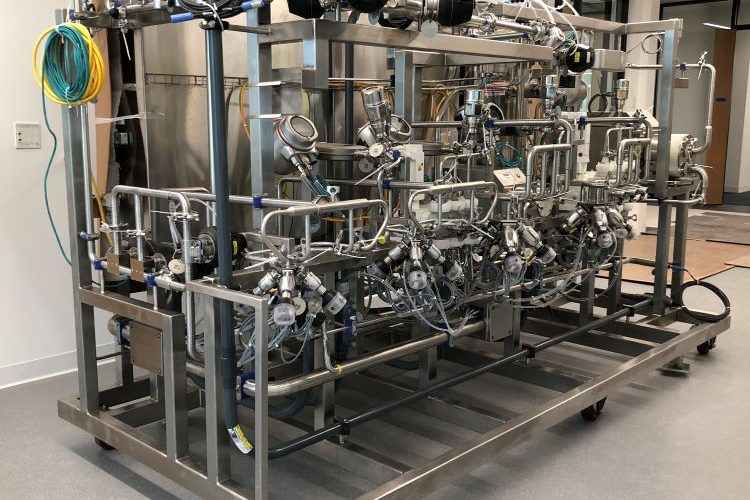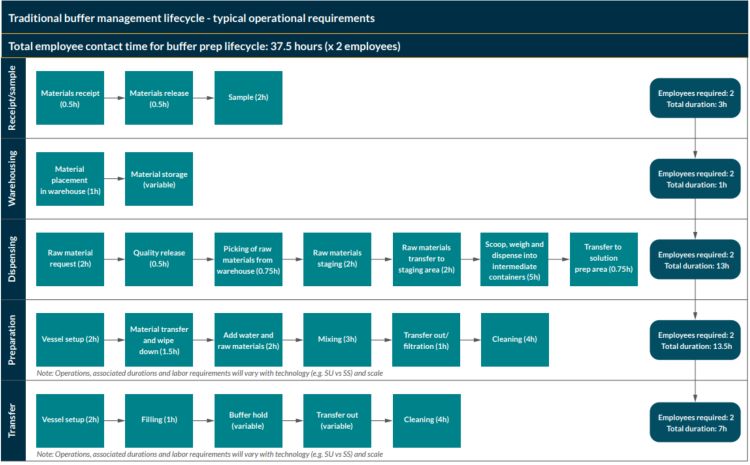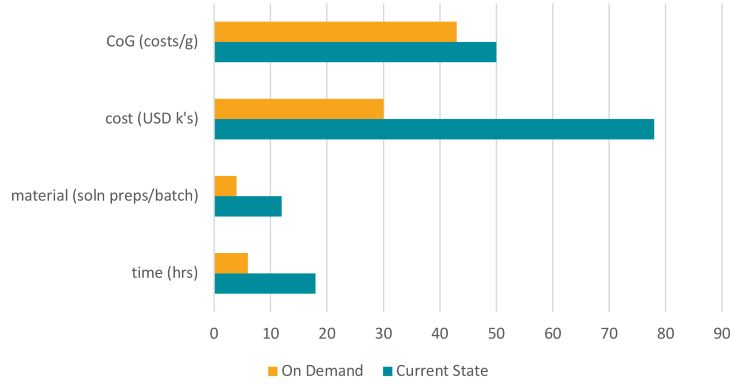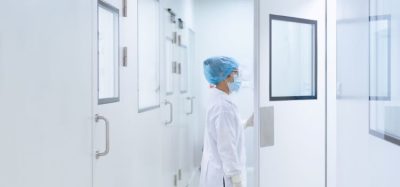Bottlenecks in buffer preparation – solving downstream issues for upstream gains
Posted: 23 December 2022 | Andrea Johnston (BioPhorum), Kerry Ann Matthews (BioPhorum) | No comments yet
The preparation of buffer solutions is a crucial component in the downstream manufacturing process for biomolecules; however, it is also one of the most resource-heavy and intensive steps. Solving these downstream issues with new approaches is critical to achieving efficiency and commercial gains within the upstream process. Here, Andrea Johnston and Kerry Ann Matthews of BioPhorum present a novel technology solution for buffer preparation.


Scrutiny of the lifecycle management of buffer solutions has increased recently. However, it has been one of the most overlooked yet fundamental parts of the manufacturing process for biomolecules for many years. The potential for bottlenecks within the scheduling process has a direct effect on facility productivity and a significant impact on the overall cost of manufacturing. Also, the storage of buffer solutions uses a large proportion of a biomanufacturing facility’s footprint at a time when emerging product classes are driving the need for multi-use, multi-scale manufacturing with built-in flexibility. The total employee contact time associated with a typical buffer management lifecycle is estimated at 37.5 hours (for two employees), with the preparation of a 2,000-litre buffer as an eight-hour, one-shift operation, depending on the technology (eg, single use versus stainless steel) and scale.1


Figure 1: Traditional buffer management lifecycle.
Overall, raw material sourcing and testing, and the preparation, storage and use of the buffer solution, are estimated to cost approximately $20-50 million per facility.2 The industry challenge has been outlined by Kimo Sanderson of Asahi Kasei as “implementing space-saving yet powerful equipment capable of creating a broad range of buffers simultaneously and in different capacities without any drop in quality or accuracy.”3
Potential solutions to this challenge are outsourcing the process or implementing on-demand automated delivery. While outsourcing may provide better flexibility for smaller brownfield re-kitted and retrofitted facilities, it also comes with the risk of a loss of quality control oversight and the potential for a lack of integration with a facility’s processes.4
Implementing on-demand, automated delivery of buffer solutions provides oversight of quality and control but has some integration challenges. Technological solutions need to be open, easily integrated, and accepted and adopted within the industry to gain momentum and trust in use. This can only be achieved through collaboration between biomanufacturers, suppliers, engineering partners and industry thought leaders to break down barriers and introduce new ways of working.


Figure 2: Benefits of on-demand versus traditional approach to buffer preparation.
| Current state | On-demand | |
| Time (hours) | 18 | 16 |
| Material (solutions per batch) | 12 | 4 |
| Buffer cost per litre ($ US) | 78 | 30 |
| Cost of good ($ USD/g) | 50 | 43 |
Automated buffer stock blending system
In a joint effort, a team from the US National Institute for Innovation in Manufacturing Biopharmaceuticals (NIIMBL) and BioPhorum members researched and outlined the problem statement,5 designed and then built a proof-of-concept Buffer Stock Blending (BSB) system. This delivers a recipe-based approach for on‑demand automated delivery of precise buffer stock solution blending using mass flow control.
The system was successfully connected to a chromatography skid to demonstrate how it supports on‑demand buffer delivery to a downstream process.”
This BSB system can develop the entire buffer within an hour – 60 l/min, with 2,000 liters reducing a typical shift by 40-50 minutes. Through online and offline testing, the created buffer met the accuracy requirements of the biomanufacturing industry – at a “game‑changing speed,” according to Jeff Johnson of BioTech Design. The system was successfully connected to a chromatography skid to demonstrate how it supports on‑demand buffer delivery to a downstream process. This has the potential to reduce cleanroom footprint and labour, the planning cycle for manufacturing, and the overall facility footprint, as it eliminates the need for large buffer prep and hold areas, without sacrificing quality. The system also provides a faster approach to the production of buffer on‑demand and, as a result, is expected to reduce operating expenditure.
The capability created by this technology to produce enough buffer to feed six bioreactors within a single skid (instead of one tank per shift) shows a significant potential to reshape existing and future biomanufacturing facilities.”
The capability created by this technology to produce enough buffer to feed six bioreactors within a single skid (instead of one tank per shift) shows a significant potential to reshape existing and future biomanufacturing facilities. However, this can only be achieved through widespread adoption and implementation of the system across the industry. To enable this, the design documentation, whitepaper and testing results have been made available open source to all,6 with the hope that we will see this technology become the standard for buffer preparation as we look to create further efficiencies in the future.
About the authors




References
- White paper addendum to the NIIMBL-BioPhorum buffer stock blending system – a more advanced concept for buffer manufacturing [Internet]. 2022. BioPhorum. [cited 2022Nov] Available from: https://www.biophorum.com/download/white-paper-addendum-to-the-niimbl-biophorum-buffer-stock-blending-system-a-more-advanced-concept-for-buffer-manufacturing/
- Estimation based on Biosolve v8.3 ‘mAb SU BioPhorum TRM’ typical process.
- Haigney S. The Importance of Buffers in Downstream Processing, BioPharm International, Volume 29,
Issue 4, 2016. - Moore B. The Case for Outsourcing Buffer Preparation in Pharma, Pharma Manufacturing, 2019.
- NIIMBL-BioPhorum Buffer Stock Blending System: A More Advanced Concept for Buffer Manufacturing. [Internet]. 2019. BioPhorum. [cited 2022Nov]. Available from: https://www.biophorum.com/download/an-economic-evaluation-of-buffer-preparation-philosophies-for-the-biopharmaceutical-industry-december-2019/
- Buffer stock blending system [Internet]. BioPhorum. 2022 [cited 2022Nov]. Available from: https://www.biophorum.com/resource/buffer-stock-blending-system/
Issue
Related topics
Biopharmaceuticals, Bioprocessing, Bioproduction, Cleanrooms, Downstream, Manufacturing, Technology









